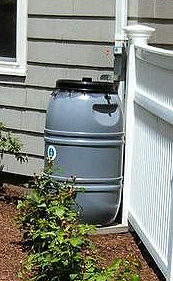Rainy Day Lesson
![]() Each Monday we write about the New England environment and way of life seen through our local perspective. Previous posts
Each Monday we write about the New England environment and way of life seen through our local perspective. Previous posts
By Dave Deegan
Like many New Englanders, we’ve been really busy lately with our garden. The warm growing months are so fleeting here that you have to be ready the minute you can plant veggies and herbs to harvest some good food later in the summer.
It’s been even more hectic this year, because my wife and I acted on our carefully-developed plans of long-overdue landscaping in our yard. But as any homeowner can tell you, there usually is no simple plan. If you do this, then it triggers that. And that. And something else.
As we thought about how we wanted our yard to be, we knew we needed to address some drainage issues: gutters were draining directly onto a walkway, and in the winter that’s a recipe for dangerous slick ice. So we excavated a channel for the gutter to drain under the walkway, leading into a dry well. Now the water will slowly infiltrate into the earth without turning into mud or ice where we need to walk.
We have another area nearby, where a gutter channels rainwater from our garage, and we thought, “this is a great spot for a rain barrel!”
Diverting rain by collecting it in a rain barrel, or channeling into a dry well (or a rain garden) has a lot of advantages besides our immediate need to address extra runoff in our garden. Stormwater runoff can collect a lot of bad stuff, especially in urban areas with lots of pavement and other hard impermeable surfaces. As water runs off roofs, parking lots and roads, it collects all the trace residues of chemicals, nutrients, silt and debris that have accumulated, and swiftly deposits it all in the nearest storm sewer, and from there it often goes directly into nearby streams, ponds or another water body. In other words, pollution.
It’s amazing how quickly our 55 gallon rain barrel fills up, just waiting for a dry spell when we need to water our garden. It’s been raining steadily for about the past six hours – not even pouring hard – and the rain barrel is full. That’s just one section of roof and gutter. It makes me realize how much water comes down in a typical rainstorm, and how much of a difference our household decisions can make to help solve a problem.
Find more New England resources on how to “Soak Up the Rain.”
More Green infrastructure solutions to stormwater
About the author: Dave Deegan works in the public affairs office of EPA New England in Boston. When he’s not digging rocks out of his garden, he loves being outdoors in one of New England’s many special places.
